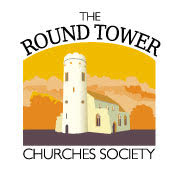After rood screens featured in the September 2021 edition of The Round Tower, Richard Barham discusses rood lofts and stairs.
Why was it necessary to be able to access the walkway, or loft, which ran across the top of the Rood screen?
Some authors have suggested that music was played from the loft and that services may have been conducted from them. It does seem to have been unlikely even in pre “health and safety” days. I tend to think that it would not have been practical.
As far as music was concerned, it would have been difficult to get instruments up the narrow stairs which would give access to the loft. As for services, pulpits and reading desks were eminently suitable for that purpose.
The main reason to be able to access the Rood loft was to give access to the Rood group – the statues of Jesus Christ Crucified, the Virgin Mary and St John the Evangelist. Candles would be lit before the Rood group and it was also necessary to be able to cover the Rood group with a veil during the period of Lent. To me, these seem to be more sensible suggestions for the need to provide a Roof loft and access to it.
In many churches, small staircases were constructed wholly, or partially, in the thickness of the walls beside the screen. In churches where this was not practical, I would suggest that access to the Rood group would have been by means of a portable ladder.
After the Reformation, Rood group statues were ordered to be removed from churches and there was, therefore, no further need to access the Rood loft. Walkways were removed and staircases, in many cases, were filled in.
Now, as we visit round towered churches it is interesting to look for clues that relate to lofts and staircases.
To see how things may have looked, Pre-Reformation, visit Fritton St Catherine Church, where you will see a staircase still leading to a loft and giving access to the Rood group. The loft and stairs were reinstated in the early 1900s, but show exactly how things may have been.
Bramfield Church – This still has coving which would have supported the walkway,.
Lound Church – It has a full blown reconstruction of coving, loft and Rood group, all introduced into the church by Sir Ninian Comper just before the Great War.
Interesting examples of stairways may be seen at the following churches.
Hardwick – Here the stairs start from a dropped window sill and go straight up through the window reveal.
Wissett – Similar in a way to those at Hardwick, but the here the lowest step of the stairs is some feet off the ground. No doubt it would have been accessed from a portable ladder.
Risby – Top and bottom doorways may still be seen, behind the pulpit, but both have long been blocked.
Lamarsh – Once again bottom and top doorways still to be seen and are, unusually, outlined in brick.
As you visit churches, not necessarily, with round towers, do look out for those interesting reminders of church life before the Reformation.
